
Freeman Wills Crofts FRSA was an Irish engineer and mystery author, remembered best for the character of Inspector Joseph French.
Inspector Joseph French is a fictional British police detective created by Irish author Freeman Wills Crofts. French was a prominent detective from the Golden Age of Detective Fiction, appearing in twenty-nine novels and a number of short stories between 1924 and 1957. The character was introduced in the 1924 novel Inspector French's Greatest Case, where he investigates a fatal diamond robbery in Hatton Garden. The series relied largely on puzzle mysteries.

Crime at Guildford is a 1935 detective novel by the writer Freeman Wills Crofts. Crofts was a leading figure of the Golden Age of Detective Fiction and often set his novels in Surrey where he lived close to Guildford. It was the thirteenth in a series of novels featuring Inspector French. It was published in America by Dodd Mead under the alternative title The Crime at Nornes.

The Cask is a 1920 detective novel by the Irish-born writer Freeman Wills Crofts. His debut novel, it is considered his masterpiece. Long after the author's reputation had declined, this book was still hailed by critics as a cornerstone of the genre Crofts had been working as a railway engineer before writing the novel, but its success launched him as one of the leading writers of the Golden Age of Detective Fiction. He later went on to create the character of Inspector French of Scotland Yard who appeared in a long-running series of novels.
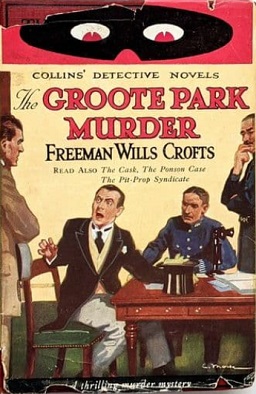
The Groote Park Murder is a 1923 detective novel by Freeman Wills Crofts, one of the leading figures of the Golden Age of Detective Fiction. It was one of several stand-alone novels Crofts wrote following his successful debut The Cask, before creating the character of Chief Inspector French who debuted the following year in Inspector French's Greatest Case.

The Pit-Prop Syndicate is a 1922 thriller novel by Freeman Wills Crofts, one of the leading figures of the Golden Age of Detective Fiction. It was one of several stand-alone novels Crofts wrote following his successful debut The Cask, before creating the character of Inspector French who debuted in Inspector French's Greatest Case (1924).
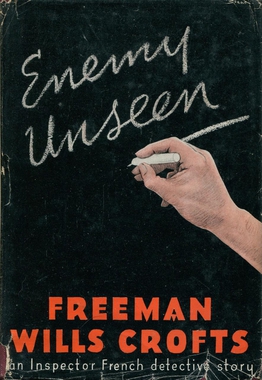
Enemy Unseen is a 1945 detective novel by Freeman Wills Crofts. It is the twenty-fifth in his series of novels featuring Chief Inspector French, a prominent figure of the Golden Age of Detective Fiction. A review by Anthony Boucher in the San Francisco Chronicle noted it was "For the patient only, but for them a rewarding treasure."

Antidote to Venom is a 1938 detective novel by the Irish-born novelist Freeman Wills Crofts. It is the eighteenth in his series of novels featuring Inspector French, a Scotland Yard detective known for his methodical technique. It was reissued in 2015 by the British Library Publishing as part of a group of crime novels from the Golden Age of Detective Fiction.

The End of Andrew Harrison is a 1938 detective novel by Freeman Wills Crofts. It is the seventeenth in his series of novels featuring Inspector French, a Scotland Yard detective of the Golden Age known for his methodical technique. The title character closely resembles Sigsbee Manderson, the murder victim of E.C. Bentley's celebrated 1913 novel Trent's Last Case.

The Box Office Murders is a 1929 detective novel by the Irish-born writer Freeman Wills Crofts. It is the fifth in his series of novels featuring Inspector French, a prominent figure of the Golden Age of Detective Fiction. It was published in the United States the same year by Harper under the alternative title The Purple Sickle Murders.

Death on the Way is a 1932 detective novel by the Irish writer Freeman Wills Crofts. It is the ninth in his series of novels featuring Inspector French, a prominent figure of the Golden Age of Detective Fiction. It was published in the United States the same year by Harper under the alternative title Double Death.
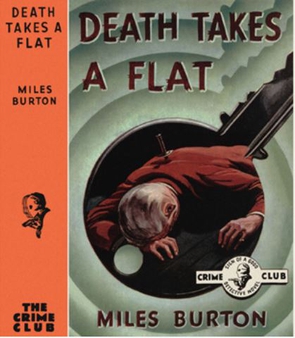
Death Takes a Flat is a 1940 detective novel by the British writer Cecil Street, writing under the pen name of Miles Burton. It was the twenty-third in a series of books featuring the detective Desmond Merrion and Inspector Arnold of Scotland Yard. It was published in the United States by Doubleday under the alternative title Vacancy with Corpse.
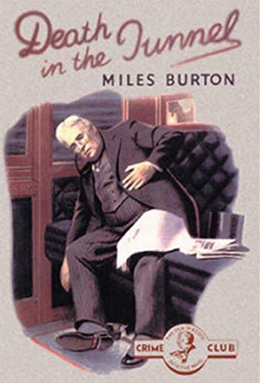
Death in the Tunnel is a 1936 detective novel by the British writer Cecil Street, writing under the pen name of Miles Burton. It is the thirteenth in a series of books featuring the amateur detective Desmond Merrion and Inspector Arnold of Scotland Yard. It was published in the United States by Doubleday the same year under the alternative title Dark is the Tunnel. Originally published by Collins Crime Club, it was reissued in 2016 by the British Library Publishing as part of a group of crime novels from the Golden Age of Detective Fiction. It is part of a subgenre of novels where murders take place on railway lines including the same author's Tragedy on the Line and Dead on the Track
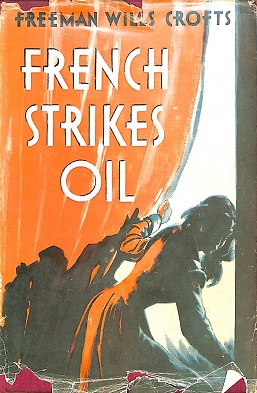
French Strikes Oil is a 1951 detective novel by the Irish-born writer Freeman Wills Crofts. It is the twenty eighth and penultimate entry in his series of novels featuring Inspector French, a Scotland Yard detective of the Golden Age known for his methodical technique. It was published in the United States by Dodd Mead under the alternative title of Dark Journey.
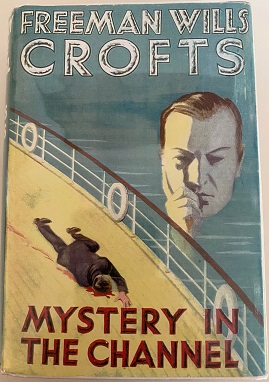
Mystery in the Channel is a 1931 detective novel by Freeman Wills Crofts. It is the seventh book in his series of novels featuring Inspector French of Scotland Yard, a prominent figure of the Golden Age of Detective Fiction known for his methodical technique. Like much of the series it features elements of police procedural, particularly the painstaking breaking down of alibis. It was published in America the same year by Harper under the altered title Mystery in the English Channel.
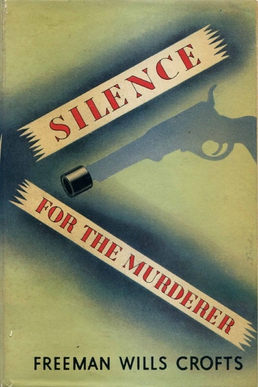
Silence for the Murderer is a 1949 detective novel by the writer Freeman Wills Crofts. It is the twenty-seventh entry in his series of novels featuring Inspector French, a Scotland Yard detective of the Golden Age known for his methodical technique. The book attempt to create more complex characterisation than was usual in the series.
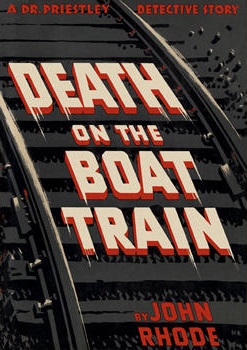
Death on the Boat Train is a 1940 detective novel by John Rhode, the pen name of the British writer Cecil Street. It is the thirty second in his long-running series of novels featuring Lancelot Priestley, a Golden Age armchair detective. As in most of the later novels much of the detective footwork is done by Inspector Waghorn of Scotland Yard. The construction of the murder setting bears similarities to Death in the Tunnel, written by Street under his other pen name Miles Burton. With its focus on seemingly unbreakable alibis and railway and ship timetables, it is also similar in style to the Inspector French novels of Freeman Wills Crofts.

The Lake District Murder is a 1935 detective novel by the British writer John Bude. It is the first in a series of novels featuring Chief Inspector Meredith, promoted at the end of case to Superintendent. Set in the Lake District of Northern England, it shows the influence of Freeman Wills Crofts's Inspector French novels by featuring a detective who methodically breaks down the alibis of his suspects. In 2014 it was reissued by the British Library Publishing as part of a group of republished crime novels from the Golden Age of Detective Fiction.
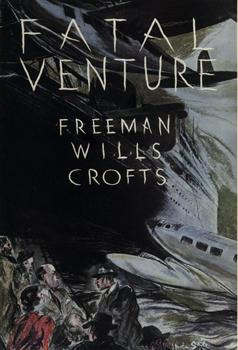
Fatal Venture is a 1939 detective novel by the Irish writer Freeman Wills Crofts. It is the nineteenth in his series of novels featuring Chief Inspector French of Scotland Yard, a prominent investigator of the Golden Age of Detective Fiction. It was released in the United States by Dodd Mead under the alternative title Tragedy in the Hollow.
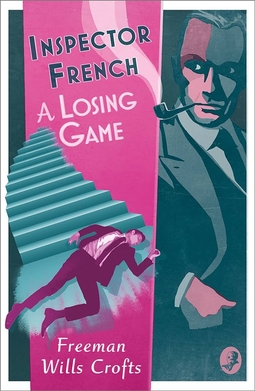
The Losing Game is a 1941 detective novel by the Anglo-Irish writer Freeman Wills Crofts. It is the twenty second in his series of novels featuring the Golden Age detective Inspector French of Scotland Yard. It was published in the United States by Dodd, Mead under the alternative title A Losing Game.



















